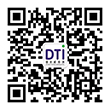EU EN71 testing for cloth toys
Date:2025-05-15 09:24:22 Classification
:【question】 Visits:
Cloth toys need to undergo EN71 testing before being sold in the EU market to ensure that they meet EU safety standards. EN71 is the regulatory standard for toy products in the EU market, targeting the safety of toys and other personal entertainment and leisure products for children under 14 years old. The following are the specific test items and processes for the EU EN71 test of cloth toys:
I. Test items
1. Physical performance test:
- Content: Including appearance tests such as size, weight, color, pattern, and mechanical performance tests such as tension, compression, and bending.
- Purpose: To ensure that the toys will not collapse, small parts fall off, sharp edges, etc. during use, which may cause harm to children.
2. Flame retardant performance test:
- Content: Test the flame retardant properties of cloth toys and evaluate their fire safety performance.
- Purpose: To ensure that toys will not burn quickly or cause fire when exposed to fire.
3. Chemical performance test:
- Content: Test the chemical substances contained in cloth toys, such as heavy metals, plasticizers, etc., to ensure that they meet EU environmental standards.
- Purpose: To prevent harmful chemicals from harming children's health.
4. Hazardous substance detection:
- Content: To test harmful substances that may exist in cloth toys, such as formaldehyde, lead, etc., to ensure that they meet EU safety standards.
- Purpose: To ensure that toys do not release harmful substances into children's bodies during use.
II. Testing process
1. Collect product information:
- Content: Provide detailed information on cloth toys, including materials, colors, sizes, weights, etc.
- Purpose: This information will be used to determine the test costs and test items.
2. Fill in the test application form:
- Content: Based on the collected product information, fill in the test application form, including the age group of the test (such as under three years old or all ages), etc.
- Purpose: To clarify the specific requirements and scope of the test.
3. Arrange sample testing:
- Content: Prepare a certain number of samples for testing based on the information in the test application form.
- Purpose: To ensure the accuracy and reliability of the test results.
4. Perform the test:
- Content: Send the samples to the certification laboratory for testing. During the test, the samples will be subjected to various performance tests and tested for chemical substances and hazardous substances contained in them.
- Purpose: Evaluate the safety and compliance of toys.
5. Prepare and issue a test report:
- Content: The certification laboratory prepares a test report based on the test results and issues it to the product manufacturer.
- Purpose: Detailed description of the test results and improvement suggestions.
6. Improve the product:
- Content: According to the recommendations in the test report, make corresponding improvements to the product to ensure that it meets the EU safety standards and quality requirements.
- Purpose: Improve the safety and market competitiveness of the product.
Through the above testing items and processes, it can be ensured that the sale of cloth toys in the EU market meets safety standards and protects the health and safety of children.




 Shen Gongwang Security: 44030602006947
Shen Gongwang Security: 44030602006947